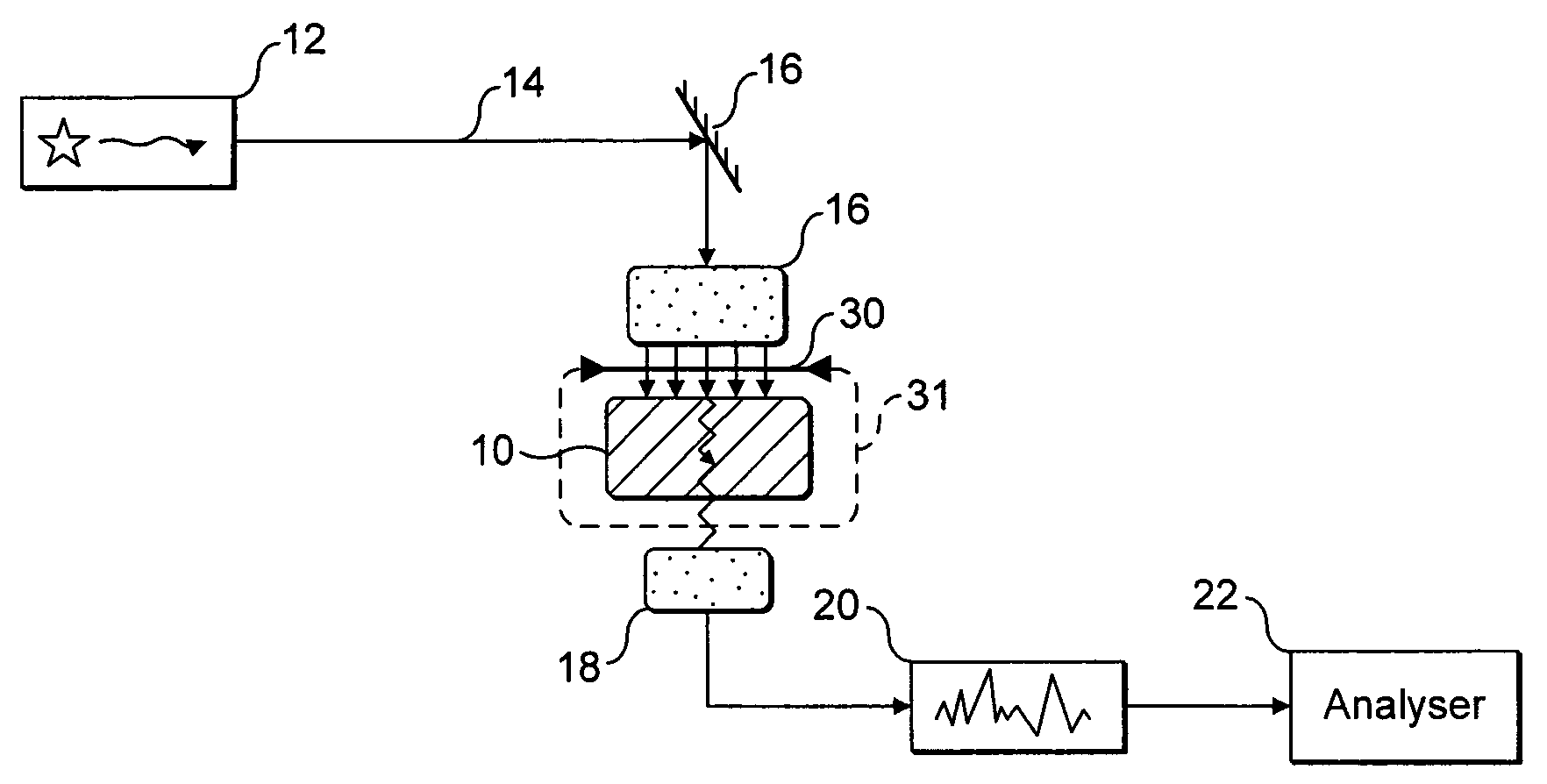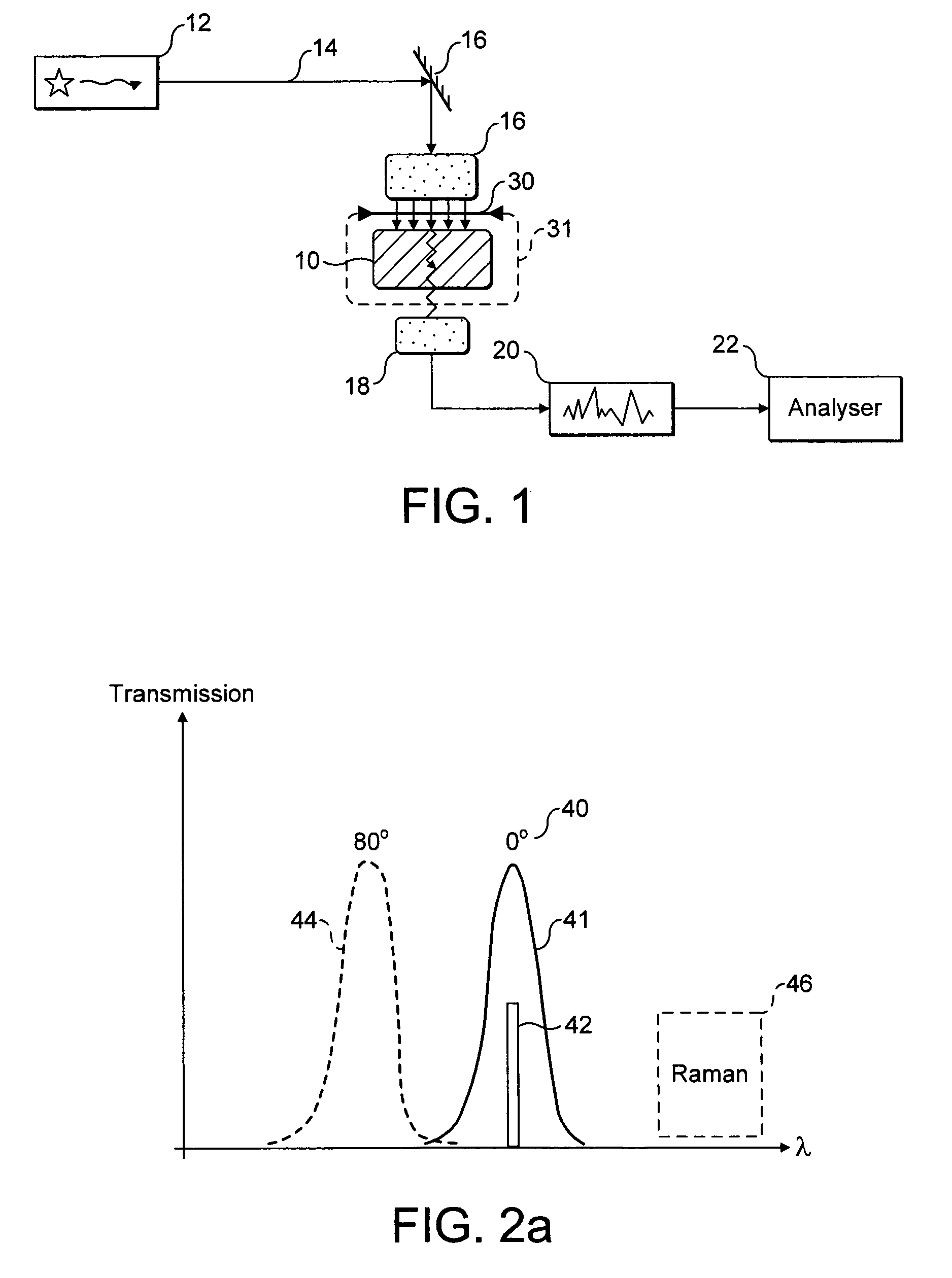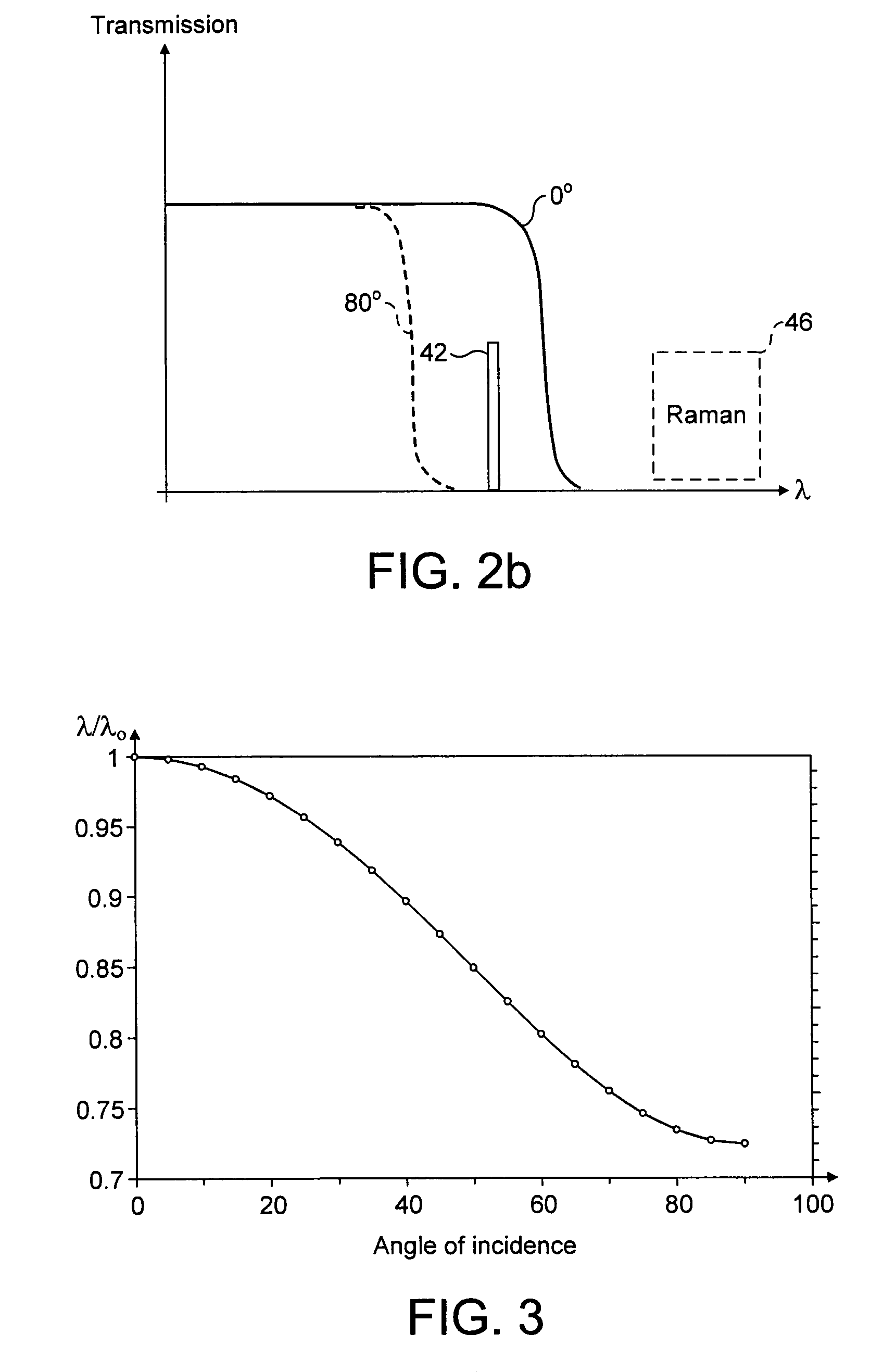Illumination of diffusely scattering media
a diffuse scattering and sample technology, applied in the field of diffuse scattering sample illumination, can solve the problems of difficult to obtain a sufficiently high signal to noise ratio for spectral features of interest, small cross section of raman scattering, and limited incident light intensity, so as to minimise the escape of backscattered light and maximize the return of incident light
- Summary
- Abstract
- Description
- Claims
- Application Information
AI Technical Summary
Benefits of technology
Problems solved by technology
Method used
Image
Examples
Embodiment Construction
[0037]Referring to FIG. 1 there is shown, schematically, apparatus for determining characteristics of a diffusely scattering or turbid sample 10 using spectroscopy. In this particular example transmission Raman spectroscopy is used, although other techniques such as infrared absorption or fluorescence spectroscopy could be used.
[0038]A laser 12 forms an incident beam (probe beam) of laser light 14 which is directed towards the sample 10 by delivery optics 16. The beam enters the sample, and after scattering within the sample some photons are collected by collection optics 18. One or more spectral components of the collected light are detected by detector 20, such as a spectrometer, and results of the detection may typically be passed to a computer or other analyser device 22 for data storage and / or interpretation. In particular, photons which have been inelastically Raman scattered to different wavelengths within the diffusely scattering sample may be detected and analysed.
[0039]For...
PUM
| Property | Measurement | Unit |
|---|---|---|
| angles of incidence | aaaaa | aaaaa |
| threshold angle | aaaaa | aaaaa |
| threshold angle | aaaaa | aaaaa |
Abstract
Description
Claims
Application Information
 Login to View More
Login to View More - R&D
- Intellectual Property
- Life Sciences
- Materials
- Tech Scout
- Unparalleled Data Quality
- Higher Quality Content
- 60% Fewer Hallucinations
Browse by: Latest US Patents, China's latest patents, Technical Efficacy Thesaurus, Application Domain, Technology Topic, Popular Technical Reports.
© 2025 PatSnap. All rights reserved.Legal|Privacy policy|Modern Slavery Act Transparency Statement|Sitemap|About US| Contact US: help@patsnap.com



